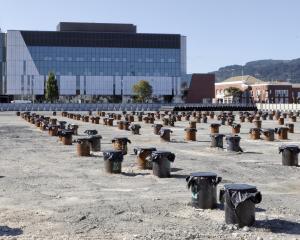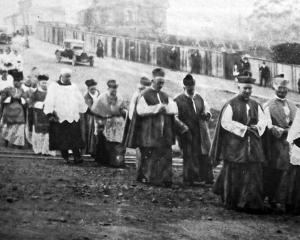St John is one of those organisations that, for many people, tends to fly under the radar. It is not until you need to call on its services that you appreciate its full worth.
So when the head of the organisation, chief executive Peter Bradley, warns St John will stop sending some ambulances to incidents because it cannot guarantee the safety of patients it is time to sit up and take notice.
Mr Bradley sent a letter to the Government last year saying the service needed a multimillion-dollar boost in funding and hundreds of new emergency staff or it would be forced to stop sending ambulances if they were single-crewed.
In his view, it was not an ambulance when single-crewed, and therefore unsafe. To solve the issue St John would have to maintain volunteer support but also increase its paid ambulance workforce by about 350 extra staff at a cost of $21million over three years.
Some will argue the letter, which found its way to the media, is scaremongering and an attempt to create public pressure on the Government to open its purse strings. But when a vital emergency service - whose core role is to save lives - feels it has no option but to go cap in hand for more money to safely do its job, then something needs to give.
The warning has particular implications for Otago and Southland. With a large geographic spread, small rural towns and reliance on volunteers, the risk of crew shortages in the South is a reality.
In fact, the latest concerns over single-crewing arose after a St John paramedic was found in breach of the code of patients' rights over his care of Kaitangata woman Marlene Dormer, who died in his single-crewed ambulance in 2013.
The paid officer, who attended the incident alone after failing to rouse a St John volunteer for support, initially struggled to get Mrs Dormer into the back of the ambulance. She subsequently died en route to Balclutha Medical Centre while the officer drove and Mrs Dormer was in the back with her daughter.
It is not just patient safety at risk from single-crewed ambulances. St John staff also risk danger, particularly if left to treat intoxicated or potentially violent patients on their own.
St John is not fully funded by the Government. Contracts with the Ministry of Health, Accident Compensation Corporation and district health boards (DHBs) fund about 80% of its operating costs. The rest comes from sponsorship, donations, fundraising, profits from commercial activities and from patient part-charges for medical emergency ambulance trips.
St John has 1200 paid ambulance officers and 2800 volunteer ambulance officers. They attend more than 335,000 incidents each year and treat and transport almost 400,000 patients. Associate Health Minister Peter Dunne said the Government was aware of and talking to St John about how to address single-crewing.
A funding review is being led by banker and former Treasury chief Murray Horn. The issue of single-crewing was identified as a problem in the 2008 ambulance services inquiry by MPs on Parliament's health committee. It revealed that in some areas 70% of emergency responses were single-crewed.
Since then the single-crew response rate has improved to about 10% overall and 21% in rural areas. During 2014-15, St John added 158 frontline staff, which the organisation said enabled it to reduce by 10,000 the number of incidents attended by a single-crewed ambulance.
But expecting any ambulance officer to arrive at an incident alone, assess the patient and then drive to a hospital - while leaving the patient unattended in the back of an ambulance - is surely a situation best avoided at any cost. It is hoped the funding review will reach a suitable compromise for St John. It is, after all, lives that are at stake.












